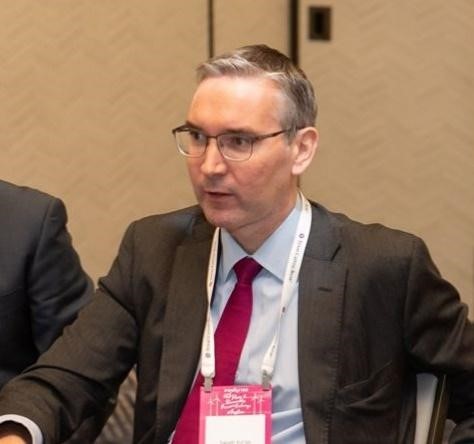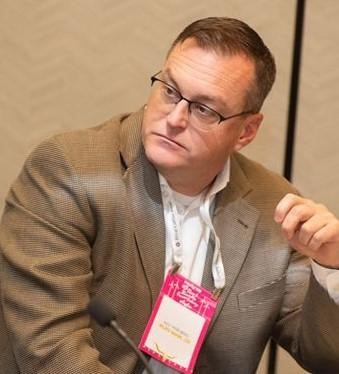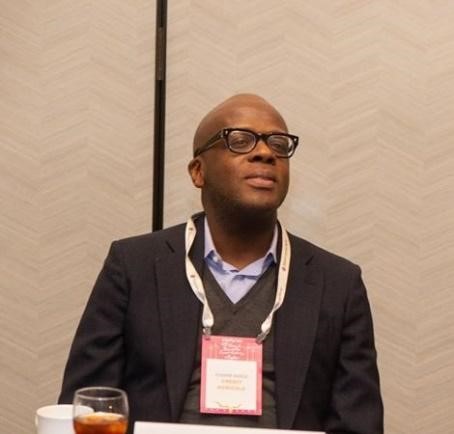Austin’s Power Bankers: Can they keep their mojo?
The good times are continuing in US power for now, with strong renewables activity compensating for slowing gas-fired volumes. Proximo asks the top lenders in the US power market what to look out for.

The US power and renewables market has been lucrative, with margins higher than Europe, deal flow still reliable, and desirable corporate clients making substantial primary and secondary investments. But with debt markets still frothy, banks are under pressure to loosen their terms. With opportunities to be creative in gas-fired power getting fewer and fewer, and vanilla renewables structures getting more aggressive, banks are looking to new sectors like storage and offshore wind to add value – and make their budgets.
How vulnerable is the US market to a downturn? How much more fossil-fuelled financing activity is likely? And can banks keep up with the pace of change in renewables?
Proximo gathered together a group of the top lenders in the US power market to try and answer these questions at its Proximo Austin: US Power and Renewables Finance Exchange. The roundtable was held pre-Covid-19.
Participants:
 Anthony Licata, executive director, JP Morgan Chase
Anthony Licata, executive director, JP Morgan Chase
 James Wright, managing director, HSBC
James Wright, managing director, HSBC
 Stuart Murray, director, Citigroup
Stuart Murray, director, Citigroup
 Daniel Fuchs, director, BlackRock
Daniel Fuchs, director, BlackRock
 Aashish Mohan, managing director, BNP Paribas
Aashish Mohan, managing director, BNP Paribas
 Alex Wernberg, managing director, MUFG
Alex Wernberg, managing director, MUFG
 Eugene Kasozi, managing director, Credit Agricole
Eugene Kasozi, managing director, Credit Agricole
Proximo: Does the US still offer higher yields to project finance bank lenders, and does this make it more attractive to global players?
Eugene Kasozi: The US still has margins that are higher than Europe or Asia
Proximo: Is that a product of debt market structure, or the kind of assets that lenders look at?
Aashish Mohan: The Euro-denominated market is dominated by banks, and in their home markets they have access to plentiful liquidity. But when they go outside their home markets and come to the US, the cost of capital changes. The US banks are just not as active in the project finance market in terms of balance sheet lending. If they did start becoming active, that might push spreads down.
James Wright: Taking banks in the Middle East as an example, they’re not subject to some of the same regulatory considerations as the European and American banks, for instance with tying up long-term capital. I remember one CCGT IPP project that raised 20-year debt at 100bp over Libor. That was pretty normal even after the crisis and may still be. International banks would have to score that capital differently from a regulatory perspective while local banks (Abu Dhabi, Qatari, Saudi etc), have different drivers. But the US market is typically shorter-term with much more developed capital markets so the miniperm to private placement route suits us all more.
Proximo: In Europe you've had European banks that have been willing to defend market share against other emerging products, whereas in the US, there’s always been a spectrum of options. Does that mean that, within those products, yields are a little bit higher?
Anthony Licata: It’s more that in Europe, so much is structured to be de-risked, so for instance the feed in tariff framework is supposed to be a lower risk proposition, and that leads to tighter pricing. But in the US you have a broader spectrum of risk, from a contracted power plant to a merchant plant to a renewable project that's taking merchant risk 15 years out. All these different combinations of risk caused us to think about accessing and developing different markets.
Aashish Mohan: European lenders are not as accustomed to taking as much risk on certain deals, so the risk reward is different. But in renewables the European banks are taking on merchant risk in Europe, whereas they are just starting to do that in US renewables.
James Wright: And this is unique to the US. There are not many markets round the world like ERCOT, PJM etc. where you're going to see live tradable prices at every single node.
Proximo: With pricing coming down there looks like more pressure on banks to take more risks. Is there going to be more evidence of banks giving sponsors more wiggle room on merchant or are there still memories of the bust of 17 years ago?
Stuart Murray: Banks are taking more and more merchant risk on the margin, either by financing a project that is 75-80% percent contracted from day one, or by providing a balloon or tail relative to the expiry of the contract at the end. The bank market has been doing that in merchant gas for a long time, and now in renewables in the US 20- to 25-year PPAs are not as common as they used to be, and projects are getting done against 12- to 15-year PPAs. Lenders are being asked to take some merchant risk on the tail to make the economics work for the developers. And you're seeing that on the margin now not only in the US, but in other countries as well in the Americas, like Mexico, or like Chile.
Daniel Fuchs: It has been part of South Australian market for quite some time, and is becoming more of a global market in that respect as well.
Proximo: Has tax equity acted as a little bit as a drag on deal structures by being quite conservative in what they expect?
James Wright: The tax equity market is unique to the US, and the large tax equity investors have the buying power, can ask for the terms they need and will leave the debt market to deal with what’s left over. It’s a product of supply and demand. I’m probably agnostic about what happens in the next 4-5 years. If there’s a further extension to the PTC/ITC, then we will continue to operate in that market. If not, and we see a convergence towards European-style debt financing markets, then that’s a net positive.
Proximo: Is non-PTC or ITC [investment tax credit] the equivalent of subsidy-free in Europe? In that it’s coming and people are getting quite comfortable with it?
Stuart Murray: It` certainly would make the financing structure a lot easier and less complicated and less costly in terms of transaction expenses, and in terms of the economics not being dependent on tax benefits. These projects are almost at grid parity, depending on the region, without tax subsidies. So there’s a glide path to the permanent expiration of the PTC and it should work pretty smoothly.
Proximo: We’ve started talking about the shift in benchmarks from Libor towards SOFR or the equivalents elsewhere. What's your feeling about how that's going to get managed – both externally and internally?
Eugene Kasozi: Banks have no choice but to go with it, and I expect that every reasonably well-run bank around this table has been prepared for some time.
Proximo: But might project finance assets be vulnerable to any spikes that happen in overnight rates in a way that maybe corporate borrowers aren't? Are you likely to be singled out within your banks?
Aashish Mohan: There's a lot of presentations and regular conference calls to address the transition from Libor to SOFR, but not so much to address specific project finance issues. There's definitely discussion about the limitations of term SOFR, derivatives, which will definitely impact the project finance market. But, a lot of that activity seems to be on the corporate side, with large US money centre banks taking a leading role. Banks face a choice between an amendment-style approach to changing from Libor to SOFR and some lenders’ preference that it'll be hardcoded into the documentation that if Libor is no longer there it'll go to SOFR.
Alex Wernberg: I don’t think project finance will be singled out or treated differently within our bank, other than the fact we are Administrative Agent on a disproportionate number of transactions and we want to make sure we get this right. SOFR is calculated on a 30-day average so the effect of any spike is averaged down and will have limited impact on the overall rate. This volatility should be able to be absorbed into the current structures but if not hedging products will be created. From a practical perspective SOFR on average should be cheaper than LIBOR, and could be beneficial to borrowers.
Proximo: How important are refinancings going to be to your institutions' books of business?
Stuart Murray: I think it continues to be hugely important. We're all seeing a tremendous amount of deal flow and activity related to acquisition financing. One factor is the enormous amount of equity capital from infrastructure funds and pension funds that is targeted at this sector. A lot of these assets are changing hands, and both benchmarks and spreads are low, making acquisition financing hugely accretive.
Aashish Mohan: The one area we're not seeing as much acquisition financing is probably on the thermal merchant space, where there are more failed auctions than there are actual acquisitions. So there you'll see more amends and extends, otherwise you're seeing refinancings or a limited recapitalisation.
Proximo: Are there still any distressed portfolios in the market that could do damage to banks' portfolios?
Alex Wernberg: There might be a few assets out there, that have underperformed to the point where they are stressed but I do think they're still financeable, maybe not in the bank market but in the Term loan B market. I don't think lenders will take hits on deals that were done three or four years ago, but based on the current trajectory there might be more assets heading that way down the road.
Daniel Fuchs: There are meant to be about $50 billion of energy term loan Bs to be refinanced in the next 12 to 18 months. And energy TLB spreads have blown out quite significantly, which may pose a challenge.
Proximo: Which assets have really delivered - and which have under-delivered?
Eugene Kasozi: Five years ago at Credit Agricole CIB we were gearing up for an increase in the financing of battery storage, which was going to be the next big thing, but it did not turn out that way. There's going to be probably at some point a ramp up in this activity. But for us, it has been a disappointing sector for the past three years.
Aashish Mohan: For us, it's been offshore wind that has dissappointed. I haven't seen it ramping up. And we haven't seen as much greenfield financing on the thermal side this year either.
Proximo: Are you surprised by how quickly coal's fallen off the radar, and is that purely economics or is it now generally understood that banks can't be seen to be doing it?
Alex Wernberg: No, in the US it’s a function of low gas prices and the corresponding low power prices. The fact that most banks can’t lend to these projects is almost irrelevant.
Anthony Licata: The economics for coal are tough. Lenders have policy restrictions lending to coal.
Proximo: Is something like the UK’s offshore transmission owner system, with separate financing to the wind farm for the transmission, worth looking at?
James Wright: There's no reason why we can't look at that model in the U.S. But that's a highly developed offshore wind market where we've had 20 years of history with the asset class. For the first one or two offshore wind deals in the U.S., there will no doubt be stress testing of structures in the market as the segment matures locally.
Eugene Kasozi: I think in the U.S. it's too early to say it's underdelivered in offshore, and it is maybe only slightly behind. I wouldn't say we're way behind where we would have been forecasted to be two years ago.
Daniel Fuchs: It's amazing how much capital has poured into this space, given that some key issues, like the Jones Act [which mandates the use of US-flagged vessels] are not being resolved.
Anthony Licata: There’s a lot of capital and it's real names, it's people who know what they're doing, and who have a track record. I'm optimistic about offshore wind, though lot of it's going to get done on balance sheet, and it may not be this year. There will be bond refinancing opportunities years from now, once these projects begin to de-risk, and M&A activity as well.
Stuart Murray: One thing that's enabled that is the receptivity of the financing markets to distributed and commercial & industrial solar with offtakers that are not investment grade utilities, whether community choice aggregators, or other new offtakers.
Proximo: How does environmental, social and governance best practice get embedded in financing decisions in practice, in working with credit committees and so on. Are the Equator Principles a model for how the market will converge around a shared set of standards?
Stuart Murray: All lenders - both bank and institutional - nowadays have an environmental and social risk management policy and a group in place that is quite simply just part of the approval process. Regardless of asset, regardless of situation, it needs to be reviewed and approved by the ESRM group internally.
James Wright: One of the positive features of the current US power market has been the prevalence of wind and solar, which are generally a clear tick in the box from an ESG perspective, so you don’t have to spend too long on these conversations. I’d also note that most of the large Wall Street banks have multibillion dollar commitments to mobilize sustainable financing dollars. So while it hasn't necessarily softened credit metrics internally, it does make it a little easier to position deals to a committee in the context of a broader public strategy.
Daniel Fuchs: There are still differences between regions. So Europeans would probably say nuclear is not ESG-friendly, while Americans might say nuclear is totally fine, and Asian investors are less sensitive to ESG, though that is changing. We see it a lot in our credit process and we look at it from the sustainability perspective. Do we have credit risks that are ESG related? We see a massive push from all investors. No one is doing coal. Investors will tell us "we are not doing coal - carve coal out from your fund".
Proximo: I'm not hearing that formal green labelling, whether for green loans or green bonds, is necessary for you. Do your organizations you have good processes for working out whether something fits?
Anthony Licata: What drives whether it's a green bond or not is whether the client wants to seek that designation for the deal. There is, so far as I can tell, less benefit for designating something as a green bond versus a renewable project that issues a bond. I see particular clients launch initiatives to designate certain issuances green.
Aashish Mohan: We've seen corporate green bond designations and we've done some corporate sustainability-linked loans, but not so much on the project side. I’ve seen a scatter graph produced by one of our debt capital markets people that showed that over time there is some spread benefit on green bonds, though it is de minimis, and there is a divergence between the non-green designated bond and the designated ones.
Proximo: What worries you about the next 18-24 months in the market?
Anthony Licata: Political and regulatory uncertainty, in terms of its potential to delay things. There are a couple of big deals where we don’t know if they will come in 2020 or not, and there’s got to be more clarity.
James Wright: On the other side, the speed of change in renewables is not always well suited to bank infrastructure. Traditional project finance lenders are not used to moving at a rapid pace in getting a deal done. We're all seeing new structures coming from sponsors, new tweaks in technology, and they need to get the deal done yesterday. That speed of change is pretty unique to renewables. You don't see it in O&G and you don’t see it in traditional infrastructure, but the green tech world is moving so quickly that you have to be constantly ahead of these developments with internal control functions.
Aashish Mohan: I agree with Mike's concerns about credit quality. That's where, from our perspective, with the types of new deal that we're seeing, that pressure is coming.
Alex Wernberg: My primary concern at this time is the extreme market liquidity causing deal structures to continue to erode which could lead to problems down the road. My secondary concern would be from extraneous events such as the China trade war, or volatility around the election next year. On a positive side, it seems as if equity is becoming more selective or difficult to get on quasi-merchant transactions which will hopefully prevent a significant overbuild in PJM. Its reassuring to see some market discipline happening.
Aashish Mohan: But the flip side is that refinancings are getting more aggressive.





